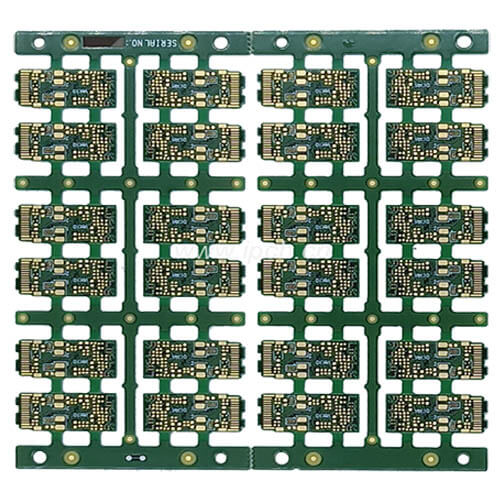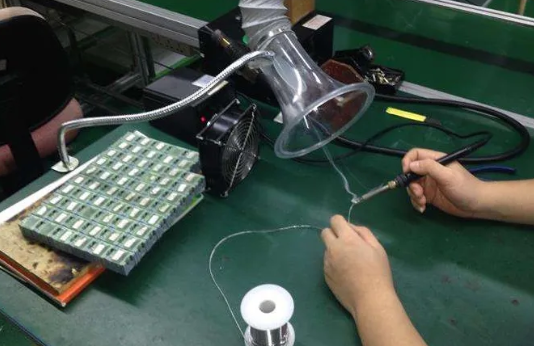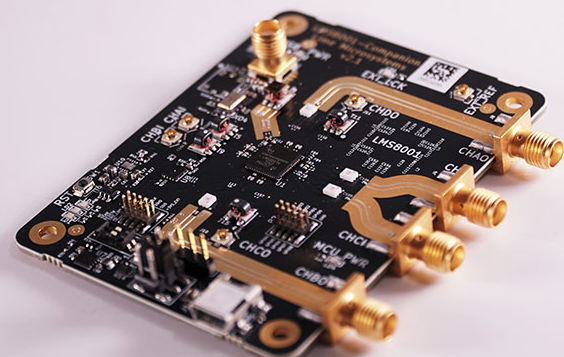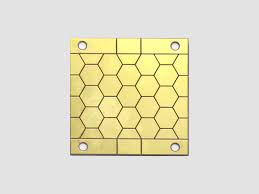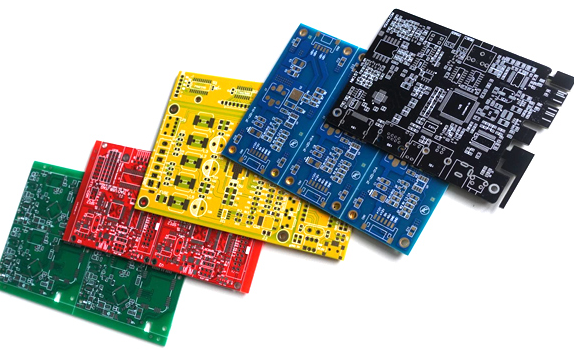Multilayer pcb materials
Advantages Of Using FR4 In Multilayer PCBs
FR4, a widely recognized material in the electronics industry, is frequently employed in the construction of multilayer printed circuit boards (PCBs). Its popularity stems from a combination of advantageous properties that make it particularly suitable for complex electronic applications.
One of the primary benefits of using FR4 in multilayer PCBs is its excellent electrical insulation capabilities.
This material is composed of woven fiberglass cloth with an epoxy resin binder, which provides a high degree of insulation, ensuring that electrical signals are transmitted without interference. This is crucial in multilayer PCBs, where multiple layers of circuitry are stacked together, and maintaining signal integrity is paramount.
In addition to its electrical insulation properties, FR4 is known for its mechanical strength and durability.
The fiberglass component of FR4 contributes to its robustness, making it resistant to mechanical stress and deformation. This is particularly important in multilayer PCBs, which are often used in applications that require high reliability and longevity, such as aerospace, automotive, and industrial electronics. The durability of FR4 ensures that the PCB can withstand the rigors of these demanding environments without compromising performance.
Another significant advantage of FR4 is its thermal stability.
Multilayer PCBs are often subjected to varying temperatures during both the manufacturing process and their operational life. FR4 exhibits a high glass transition temperature (Tg), which means it can maintain its structural integrity and performance characteristics at elevated temperatures. This thermal stability is essential for preventing warping or delamination of the PCB layers, which could otherwise lead to circuit failures. Furthermore, FR4’s low coefficient of thermal expansion (CTE) ensures minimal dimensional changes with temperature fluctuations, thereby maintaining the alignment and connectivity of the multilayer structure.
The cost-effectiveness of FR4 is another factor that contributes to its widespread use in multilayer PCBs.
Compared to other high-performance materials, FR4 offers a balanced combination of performance and affordability. This makes it an attractive option for manufacturers looking to produce reliable and high-quality PCBs without incurring excessive costs. The availability of FR4 in various grades and thicknesses also provides flexibility in design, allowing engineers to tailor the material properties to specific application requirements.
Moreover, FR4’s compatibility with standard PCB manufacturing processes is a notable advantage.
It can be easily drilled, etched, and laminated using conventional techniques, facilitating efficient and cost-effective production. This compatibility extends to surface finishes and soldering processes, ensuring that components can be reliably attached to the PCB. The ease of processing FR4 not only reduces manufacturing time but also minimizes the risk of defects, contributing to the overall quality and reliability of the final product.
In conclusion, the use of FR4 in multilayer PCBs offers a multitude of advantages that make it a preferred choice in the electronics industry. Its excellent electrical insulation, mechanical strength, thermal stability, cost-effectiveness, and compatibility with standard manufacturing processes collectively contribute to the production of reliable and high-performance PCBs. As electronic devices continue to evolve and demand more complex and robust circuitry, the role of FR4 in multilayer PCB construction is likely to remain significant, ensuring that these devices can meet the stringent requirements of modern applications.
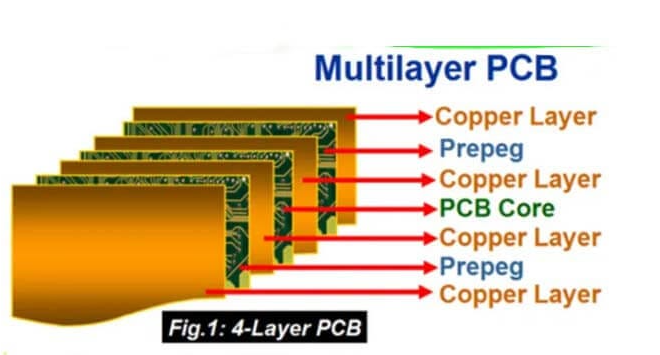
Comparing Polyimide And FR4 For High-Temperature Applications
When selecting materials for multilayer printed circuit boards (PCBs) intended for high-temperature applications, two prominent choices often come to the forefront: Polyimide and FR4. Both materials have distinct properties that make them suitable for specific applications, yet they also exhibit differences that can significantly impact performance, reliability, and cost. Understanding these differences is crucial for making an informed decision.
Polyimide is a high-performance polymer known for its exceptional thermal stability,
mechanical strength, and chemical resistance. It can withstand continuous operating temperatures of up to 260°C, making it an ideal choice for environments where high thermal endurance is required. This material’s ability to maintain its structural integrity under extreme conditions is particularly beneficial in aerospace, military, and industrial applications where reliability is paramount. Additionally, Polyimide exhibits excellent dielectric properties, which contribute to its effectiveness in high-frequency and high-speed circuits.
In contrast, FR4 is a composite material made from woven fiberglass cloth with an epoxy resin binder that is flame resistant.
It is the most commonly used material for PCBs due to its balanced properties and cost-effectiveness. FR4 can typically endure temperatures up to 130°C, although high-temperature variants can extend this range to approximately 170°C. While this is significantly lower than Polyimide, FR4’s thermal performance is sufficient for many commercial and consumer electronics applications. Moreover, FR4 offers good mechanical strength and electrical insulation properties, making it a versatile choice for a wide range of PCB designs.
One of the primary considerations when comparing Polyimide and FR4 is their thermal performance.
Polyimide’s superior thermal stability allows it to perform reliably in high-temperature environments where FR4 might fail. This makes Polyimide a preferred material for applications involving prolonged exposure to high temperatures or rapid thermal cycling. On the other hand, FR4’s thermal limitations can be a constraint in such scenarios, potentially leading to material degradation, delamination, or failure of the PCB.
Another critical factor is the cost.
Polyimide is generally more expensive than FR4 due to its advanced properties and the complexity of its manufacturing process. This higher cost can be justified in applications where the performance benefits of Polyimide are essential. However, for many standard applications where extreme thermal conditions are not a concern, FR4 provides a more economical solution without compromising on necessary performance attributes.
Furthermore, the mechanical properties of these materials also play a role in their selection.
Polyimide’s high tensile strength and flexibility make it suitable for flexible PCBs and applications requiring dynamic bending. In contrast, FR4’s rigidity is advantageous for maintaining structural stability in rigid PCB designs. The choice between these materials often depends on the specific mechanical requirements of the application.
In conclusion, the decision between Polyimide and FR4 for high-temperature applications hinges on a careful evaluation of thermal performance, cost, and mechanical properties. Polyimide’s superior thermal stability and mechanical strength make it ideal for demanding environments, albeit at a higher cost. Conversely, FR4 offers a cost-effective solution with adequate performance for many standard applications. By understanding the unique attributes of each material, engineers and designers can make informed choices that align with the specific demands of their projects, ensuring both reliability and cost-efficiency.

The Role Of Copper Foil In Multilayer PCB Performance
In the realm of multilayer printed circuit boards (PCBs), the choice of materials plays a pivotal role in determining the overall performance and reliability of the final product. Among these materials, copper foil stands out as a critical component, significantly influencing the electrical and thermal characteristics of the PCB. Understanding the role of copper foil in multilayer PCB performance necessitates a comprehensive examination of its properties, applications, and the impact it has on the functionality of the circuit board.
Copper foil, a thin sheet of copper, is utilized in multilayer PCBs to create conductive pathways that facilitate the flow of electrical signals between different layers.
The thickness of the copper foil, typically measured in ounces per square foot, is a crucial parameter that affects the current-carrying capacity and the overall impedance of the circuit. Thicker copper foils are often employed in high-power applications where higher current densities are required, while thinner foils are suitable for high-frequency applications where signal integrity is paramount.
The quality of the copper foil is another essential factor that influences the performance of multilayer PCBs.
High-purity copper foils exhibit excellent electrical conductivity, which is vital for minimizing signal loss and ensuring efficient power distribution across the board. Additionally, the surface finish of the copper foil can impact the adhesion between the copper layers and the dielectric materials. A smooth, clean surface promotes better bonding, thereby enhancing the mechanical stability and durability of the PCB.
Moreover, the type of copper foil used in multilayer PCBs can vary depending on the specific requirements of the application.
Electrodeposited (ED) copper foil, known for its high tensile strength and uniform thickness, is commonly used in standard PCB manufacturing processes. On the other hand, rolled annealed (RA) copper foil, which offers superior flexibility and fatigue resistance, is preferred in applications that demand high reliability and long-term performance, such as in aerospace and automotive industries.
The role of copper foil extends beyond its electrical properties; it also plays a significant part in the thermal management of multilayer PCBs.
Copper’s high thermal conductivity allows it to efficiently dissipate heat generated by electronic components, thereby preventing overheating and ensuring the longevity of the PCB. In high-power applications, where thermal management is critical, the use of thicker copper foils can help in effectively spreading and dissipating heat, thus maintaining optimal operating temperatures.
Furthermore, the integration of copper foil in multilayer PCBs must be meticulously controlled during the manufacturing process to avoid defects such as delamination, voids, and cracks. Advanced fabrication techniques, such as laser drilling and precision etching, are employed to ensure the accurate formation of copper traces and vias, which are essential for maintaining the integrity of the electrical connections between layers. Proper handling and storage of copper foil are also crucial to prevent oxidation and contamination, which can adversely affect the performance of the PCB.
In conclusion, copper foil is an indispensable material in the construction of multilayer PCBs, significantly impacting their electrical, thermal, and mechanical performance. The selection of the appropriate type and thickness of copper foil, coupled with stringent quality control measures during manufacturing, is essential for achieving high-performance and reliable PCBs. As electronic devices continue to evolve, the role of copper foil in multilayer PCB performance will remain a critical area of focus for designers and manufacturers striving to meet the ever-increasing demands of modern technology.
Benefits Of Using High-Frequency Laminates In Multilayer PCBs
High-frequency laminates have become increasingly significant in the realm of multilayer printed circuit boards (PCBs), offering a multitude of benefits that enhance the performance and reliability of electronic devices. As the demand for faster, more efficient electronic systems continues to grow, the choice of materials used in PCB fabrication becomes crucial. High-frequency laminates, specifically designed to operate at elevated frequencies, provide several advantages that make them indispensable in modern electronics.
One of the primary benefits of using high-frequency laminates in multilayer PCBs is their superior electrical performance.
These materials exhibit low dielectric constant (Dk) and low dissipation factor (Df), which are essential for maintaining signal integrity at high frequencies. The low Dk ensures minimal signal delay, while the low Df reduces signal loss, thereby enhancing the overall performance of the PCB. This is particularly important in applications such as telecommunications, radar systems, and high-speed data transmission, where maintaining signal fidelity is critical.
In addition to their excellent electrical properties, high-frequency laminates offer improved thermal management.
These materials typically have a higher thermal conductivity compared to standard FR-4 laminates, allowing for more efficient heat dissipation. Effective thermal management is vital in preventing overheating and ensuring the longevity of electronic components. By using high-frequency laminates, designers can create multilayer PCBs that operate reliably under high thermal loads, which is essential for applications in aerospace, automotive, and industrial electronics.
Moreover, high-frequency laminates exhibit superior mechanical stability.
They are less prone to warping and deformation under thermal stress, which is a common issue with conventional PCB materials. This mechanical robustness ensures that the multilayer PCBs maintain their structural integrity during manufacturing processes such as drilling, plating, and soldering. Consequently, the use of high-frequency laminates results in higher manufacturing yields and reduced production costs, making them an economically viable option for high-performance applications.
Another significant advantage of high-frequency laminates is their compatibility with advanced fabrication techniques.
These materials can be easily integrated into complex multilayer PCB designs, including those with fine-pitch components and intricate routing. The ability to support advanced manufacturing processes such as laser drilling and sequential lamination enables the production of highly sophisticated PCBs with multiple layers and dense interconnections. This compatibility is crucial for the development of cutting-edge electronic devices that require compact and efficient circuit designs.
Furthermore, high-frequency laminates contribute to the overall reliability and durability of multilayer PCBs.
Their resistance to moisture absorption and chemical degradation ensures that the PCBs remain functional in harsh environmental conditions. This is particularly beneficial for applications in military and defense, where electronic systems are often exposed to extreme temperatures, humidity, and corrosive environments. By using high-frequency laminates, manufacturers can produce robust PCBs that meet stringent reliability standards and perform consistently over extended periods.
In conclusion, the use of high-frequency laminates in multilayer PCBs offers numerous benefits that enhance the performance, reliability, and manufacturability of electronic devices.
Their superior electrical properties, improved thermal management, mechanical stability, compatibility with advanced fabrication techniques, and resistance to environmental factors make them an ideal choice for high-frequency applications. As the demand for faster and more efficient electronic systems continues to rise, high-frequency laminates will play an increasingly vital role in the advancement of PCB technology.

